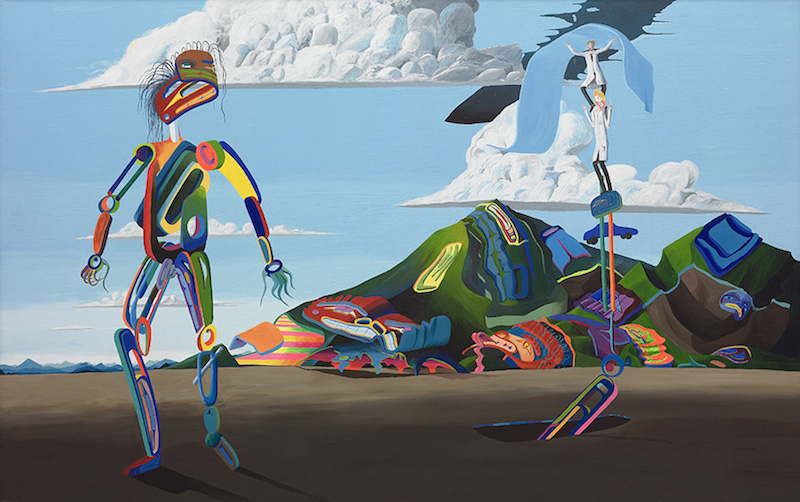
Open sky. Light. Robin’s egg blue. Unlike London in March. Nor Abbotsford in July.
Brown, uniform earth. Rare in BC. Topsoil here is usually thin. This is a special plain. Is it fertile? Naturally bald? Or cleared, like the depicted mountains?
Gaze left. Tendrils unfurl from head and hands. Wispy First Nations man looking up to the blue (his heavy penis points toward the brown earth). Expression ambiguous. He is perplexed. Maybe irritated? His features direct me to Jack and his beanstalk. Only it’s not. Pasty white and pink-skinned lab coats in the sky, standing on a colourful scaffold. The scaffold belongs to the nations who inhabited the land first. Their knowledge. Their ingenuity. When Europeans first glanced at the new world, they weren’t looking at wild nature. It was managed land and water even then. Caucasians managed the land and water differently. We are all human and our tribes seek the same goal: increase population. “Some is good; more is better.”
Human expansion means patching our sky (among other things) and turning around the inevitable tarnishing. But tarnishing is irreversible, just removable. Expand, tarnish, remove, repeat. Our tribes approach and reapproach sustainability margins. The feedback loop resets; we patch, and patch again.
We belong to the earth, not the other way around. Patch ourselves, not our blue sky.

tl’ils, tl’ils, love, love